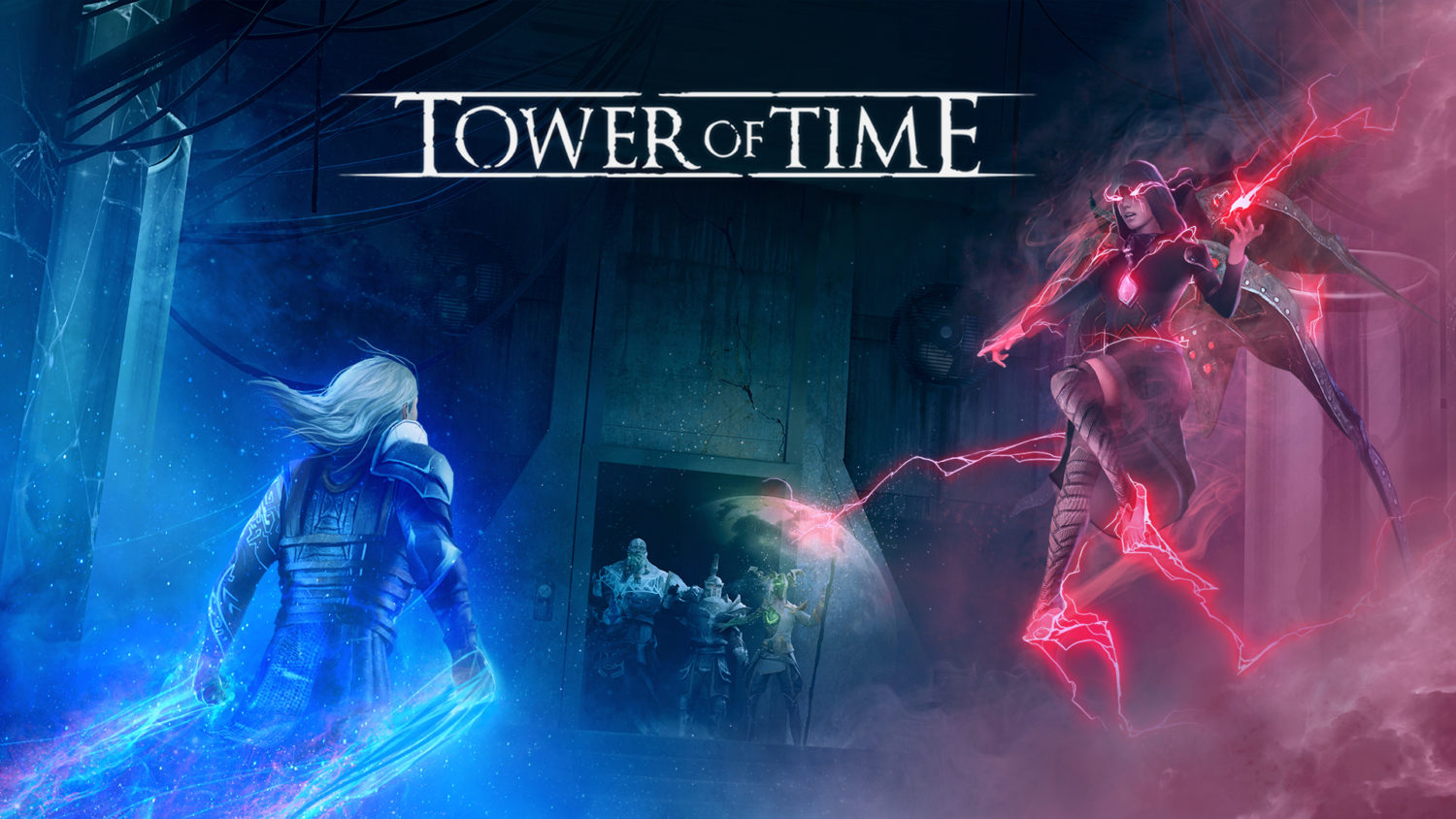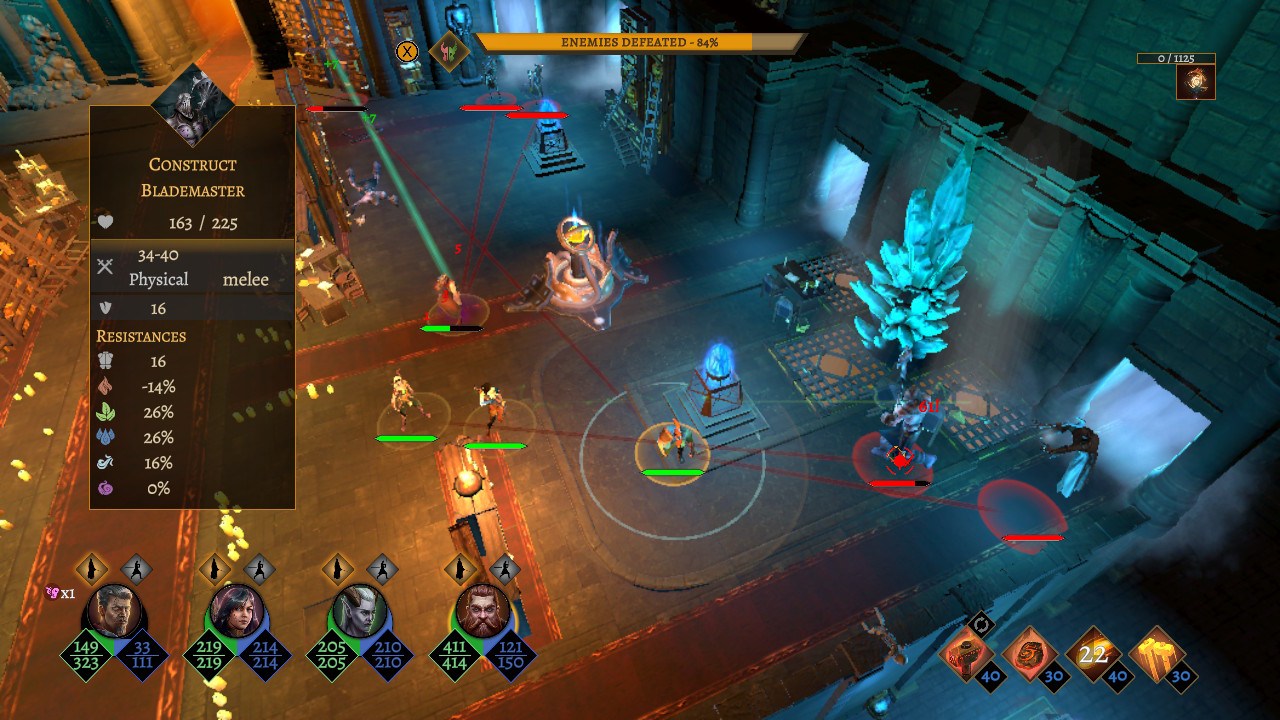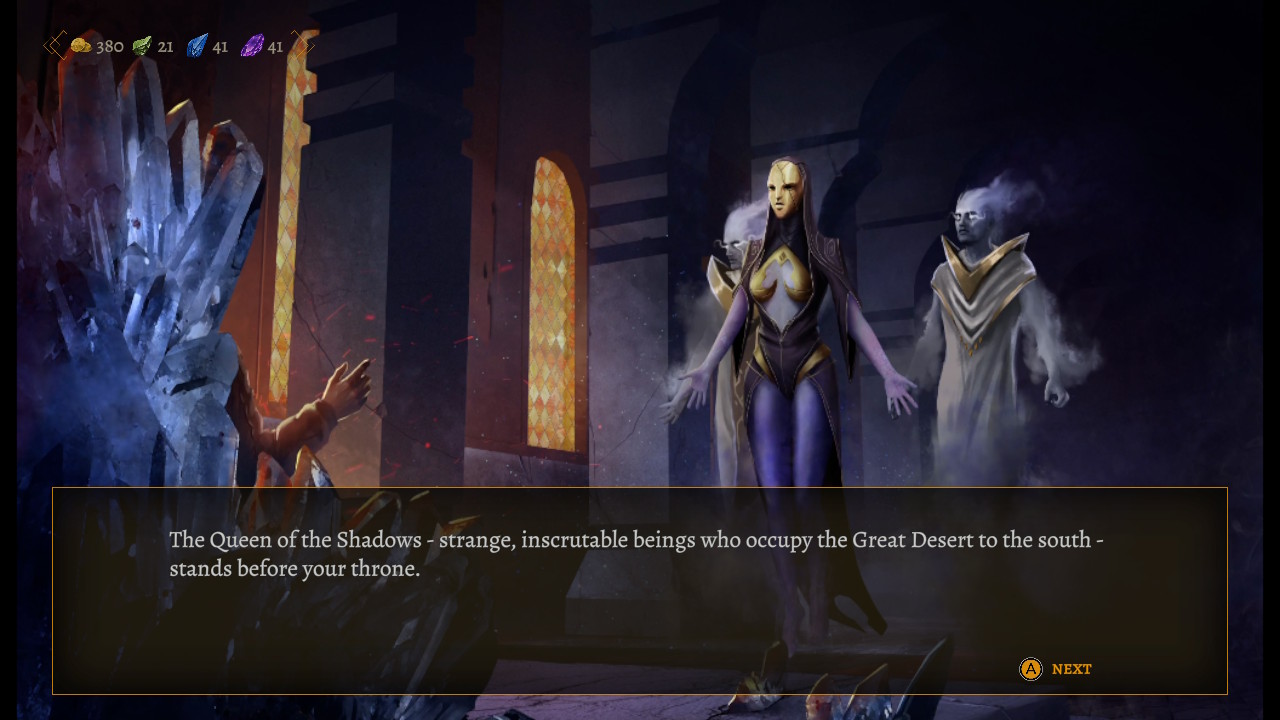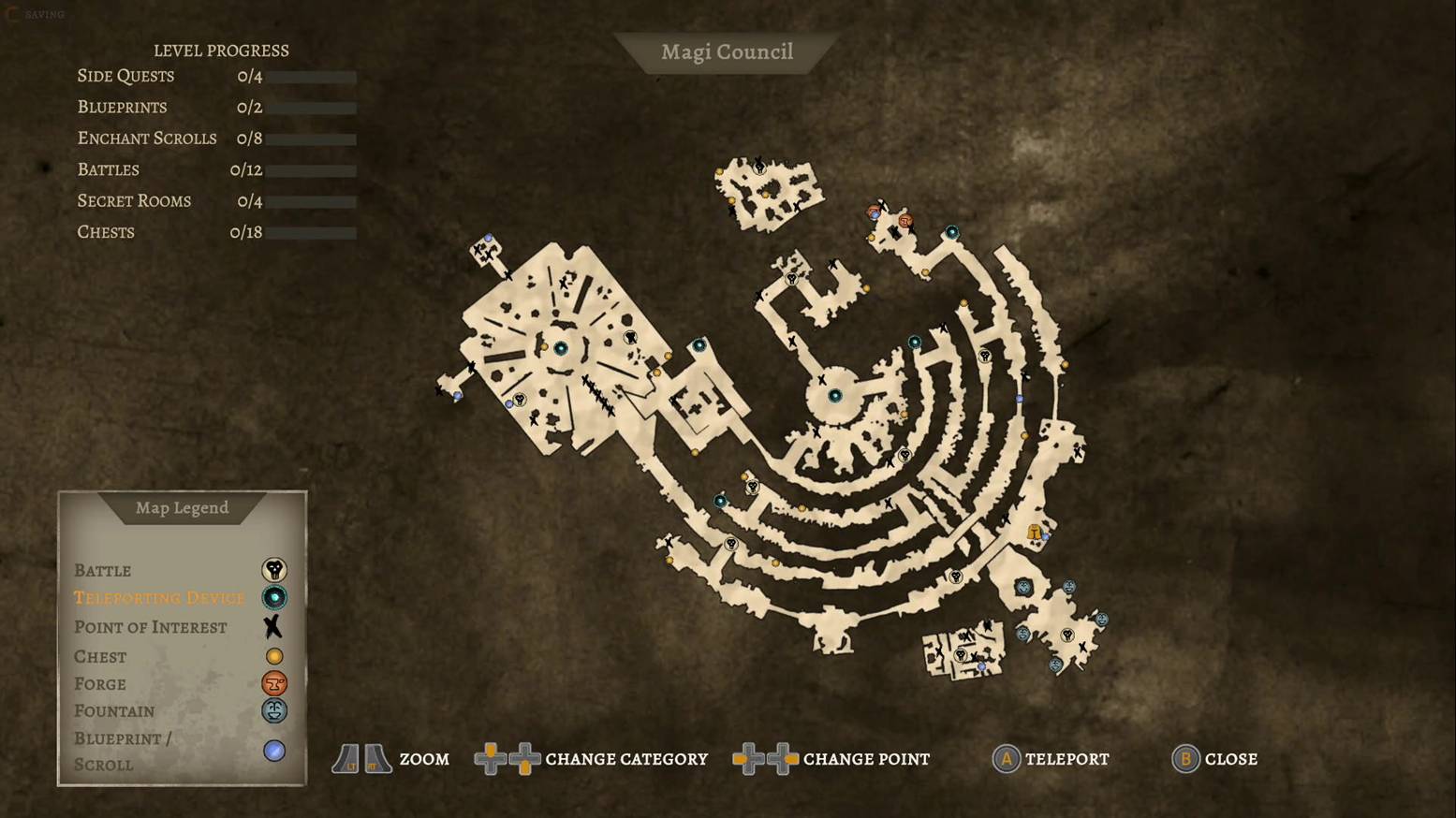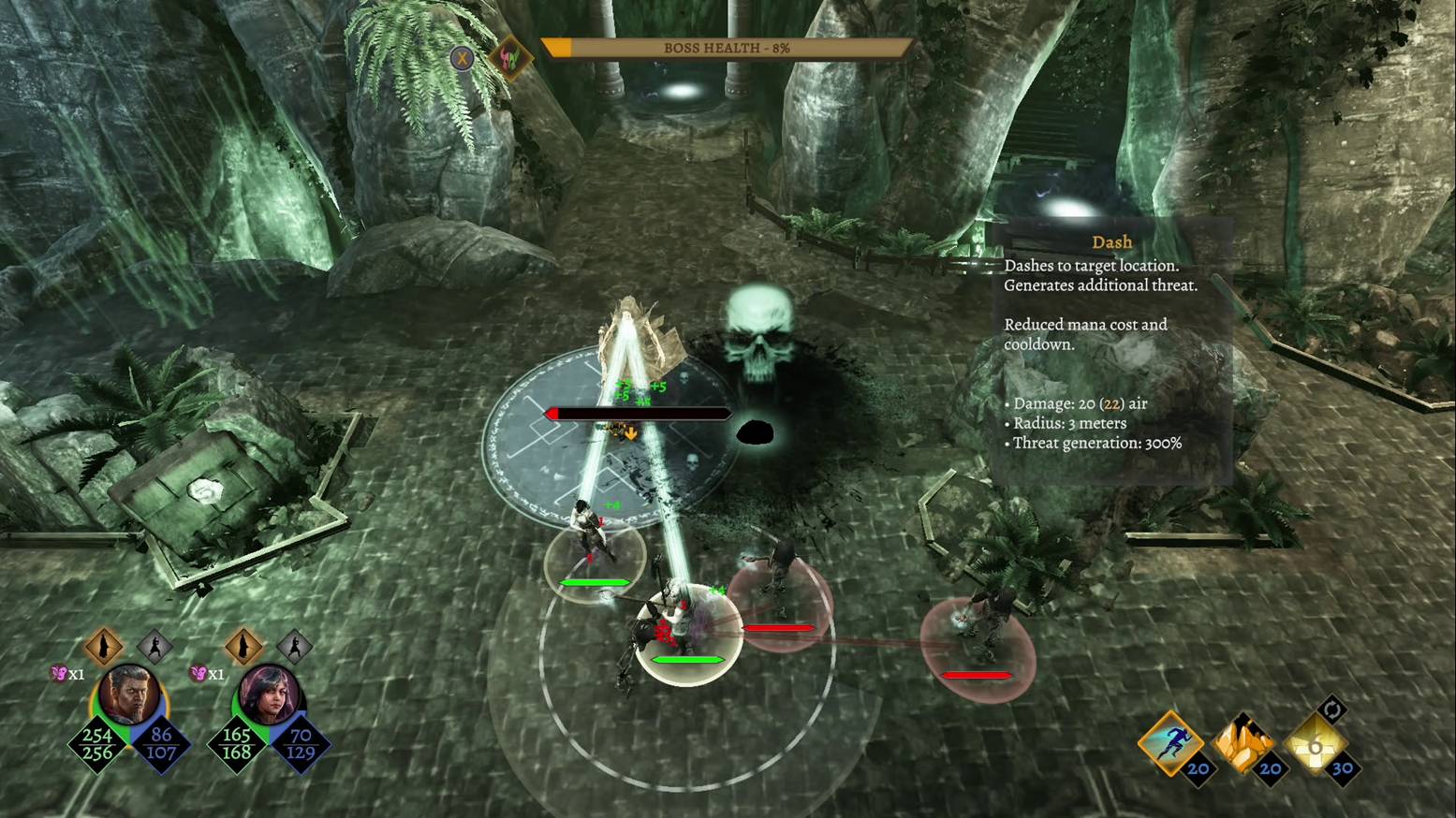We know we've got nothing but time.
Have you ever had the feeling the whole world just got turned upside down? In Tower of Time, you don’t get a gravitational inversion for the whole planet (which is a good thing, by the way), but the tower you have to explore is actually upside down.
Let’s start with the common stuff this time. How does the game look and sound? On these fronts, Tower of Time gets good marks. There are times where the video could be a bit smoother in handheld mode (frame rate issue), but the visuals are very well done and provide enough detail to really get into the exploration. Given the level of detail and amount of text you get with this game, I recommend playing in docked mode.
The music and audio are well done and low-key enough to fill their role as support elements.
Tower of time provides a dungeon-crawler RPG feel, but it includes a lot of story as well. It sometimes feels like the game stays too long on the story elements, but the information is mostly useful (sooner or later). The game opens with a lengthy monologue and a somewhat playable scene designed to lead you as a child to a throne, provide you some history, and set things up for your return later as a grownup. When you return you come with a couple of soldiers. These new friends will do the exploring and fighting for you. The original “you” goes off to sit on the throne to watch and guide your adventuring party. I suppose this is one of the perks of being in charge.
As you make your way down to the top floor, you will encounter undead (skeleton warriors, etc.), all dead (skeletons), and some new allies who may or may not join your party. As you collect allies, you can swap members in and out of your adventuring party; you can only have four members at a time. This sounds good, but you only start with two—one tank and one ranged (archer)—so be careful with your first few rounds of combat as you will be outnumbered.
Speaking of your party, exploring the tower will help you find objects and gold. Objects are often things you can equip and use: armor, weapons, rings, amulets, etc. Here, we come to one of my peeves with the game; Tower of Time does not do a very good job with the tutorials. If you like to poke around on the controls to see what they do, you will find the L button gives you a circular menu. Use the right JoyCon to select between Library, Map, Return to City, or Character. In the Character area, you can equip items. The Library provides access to current quest information and your progress. The Map shows where you have explored. Finally, Return to City gives you access to buildings for training/upgrades as well as the other information available in the Library and Character areas.
There is one apparent oddity with the whole upside-down tower thing; if the building is upside down and the “top floor” is at the bottom of the structure, why are the structural arches still right side up? Just another point to ponder as you wander around the tower.
Regarding actual exploration and combat, this is a mixed bag. Moving around to explore is pretty standard left JoyCon action. You don’t need to worry about falling off a cliff as the game won’t let you go anywhere it doesn’t want you to. As you explore, you can interact with certain elements. These will show an “A” button icon over them, so all you have to do is walk up to the object/person and press the A button. It sounds simple, but sometimes the game is a bit picky with where exactly you have to stand. Not tragic, but sometimes annoying.
Next is the combat action, which is another area where some more developed tutorials early in the game would be beneficial. Tactical placement is important, and a strategic plan is very helpful, but using some of the controls during live combat is a bit awkward. There is a silver lining here; you can use the A button to stop time. That’s right, press the A button, stop time, then you can select where you want your party members and what weapon/action should be used. Press the A again and the action starts. If you don’t do anything, your fighters will automatically defend themselves, but they won’t move around or coordinate efforts—this will get you dead fast. One other oddity with combat sessions is that the game does not have an option to tell the entire party to move as a unit; you will have to set each character’s position and action individually, which can sometimes be a pain. With the action stopped, however, you have plenty of time to lay out the action plan.
The combat is actually one of the areas with a more thorough gaming experience. Tower of Time is full of stats, abilities, equipment, and tactical situations, so if you are into numbers and planning you will be kept busy. If all you want is a hack and slash dungeon dive, this game may be more involved than what you’re after.
There is one other feature of the game which bears mentioning—your party members don’t really level up. That’s right; this is an RPG with no points and leveling up mechanism. How can this possibly be? To get better at what you do, the game has set up a training feature for each character class. To make any advances, you need to find blueprints to improve your class training building and then provide gold to fund it. This will let you improve your skill level with your weapon and allow you to add a few skill points where you want them so you can tailor your party.
On the down side, there are some minor graphics issues and the tutorials could be more thorough. The combat can be a bit clunky and the controls are sometimes awkward combinations. On the upside, the game looks good and has plenty of story. You get a detailed combat system which requires plenty of tactical thinking.
Review: Tower of Time (Nintendo Switch)
Very Good
Tower of Time provides a detailed combat system that requires plenty of tactical thinking, so you get good value for money. There are points which could be refined, but as it stands, this is a good game for strategy/RPG fans.

